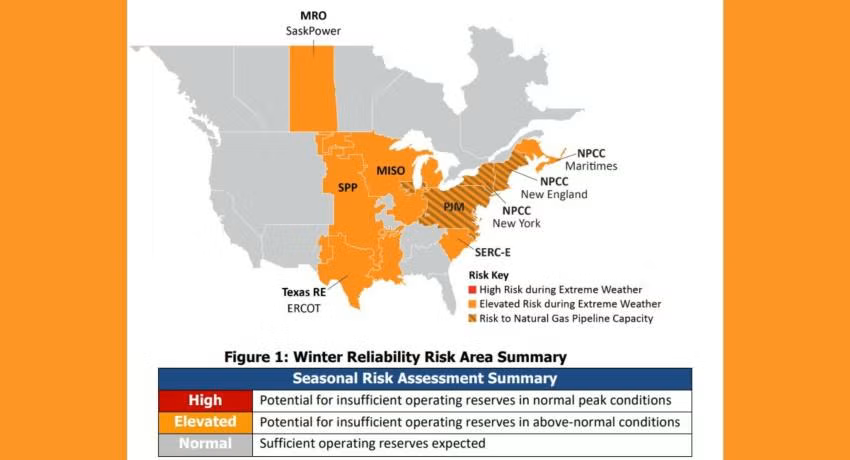Ohio and many other parts of the United States are at elevated risk of electricity supply shortfalls during extreme cold weather this winter, according to a new report released by the North American Electric Reliability Corporation.
NERC released its electricity reliability assessment for the upcoming winter season, and cites retirements of always-available power generation from coal-fired and older gas-fired plants as the cause, which presents challenges for the country’s power grid. 
In the NERC Winter Reliability Assessment, the organization reported all assessed areas should have adequate resources for normal peak winter load, but the Midwest, Mid-Atlantic and Northeast—as well as Texas—are at risk of energy shortfalls or natural gas pipeline capacity constraints if there is a lengthy cold snap.
Ohio is part of PJM, the regional organization responsible for balancing power supply and demand on the grid. The NERC report states prolonged, wide-area cold snaps could drive sharp increases in electricity demand when natural gas generation, BPS generators, wind and solar resources are challenged by freezing conditions.
“This growing threat to reliable electricity jeopardizes the health of local communities and undermines the American economy,” said Jim Matheson, CEO of National Rural Electric Cooperative Associaiton, or NRECA. “This report clearly highlights the need to swiftly implement a pro-energy policy agenda with a focus on affordability and reliability for American families and businesses. Smart energy policies that keep the lights on are more important than ever.”
Energy conservation can provide the best defense against energy shortages during extreme cold snaps.
- Adjust your thermostat 1-3 degrees
- Minimize use of large appliances in coldest part of day
- Seal windows and doors to prevent warm air escape
- Add insulation to exterior walls, attic
- Unplug any appliances not in use
To read the full NERC Winter Reliability Assessment for 2024-2025 click here.

